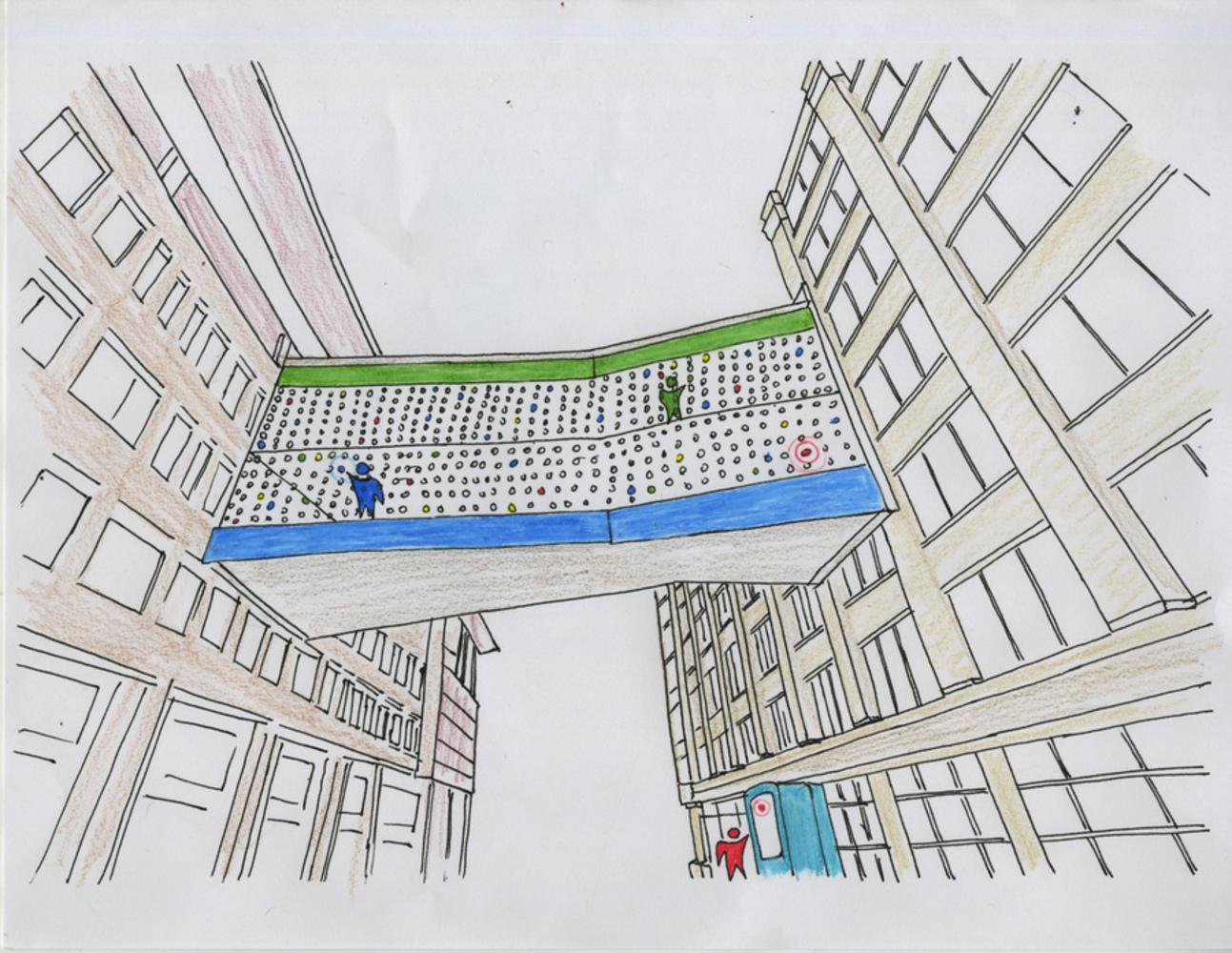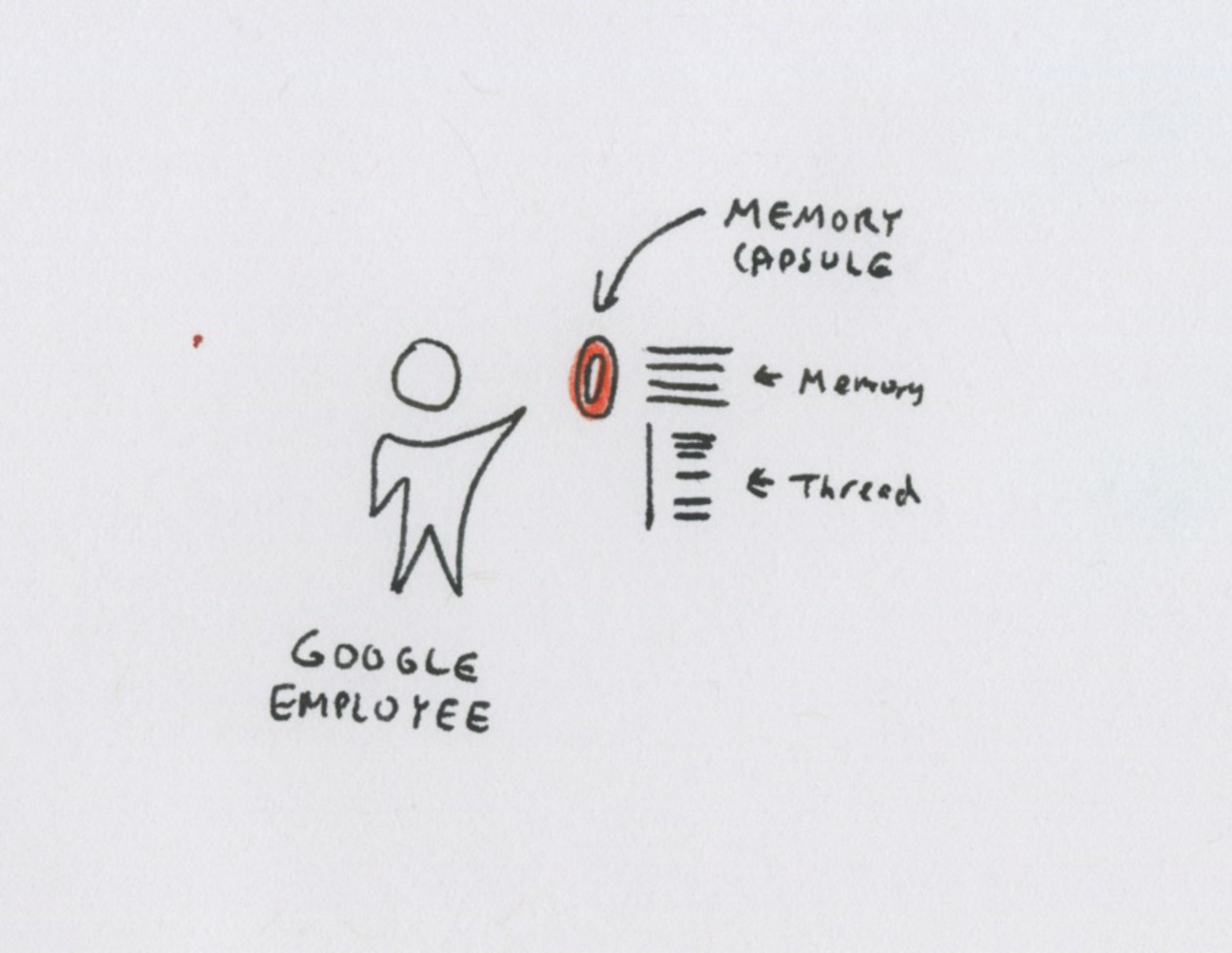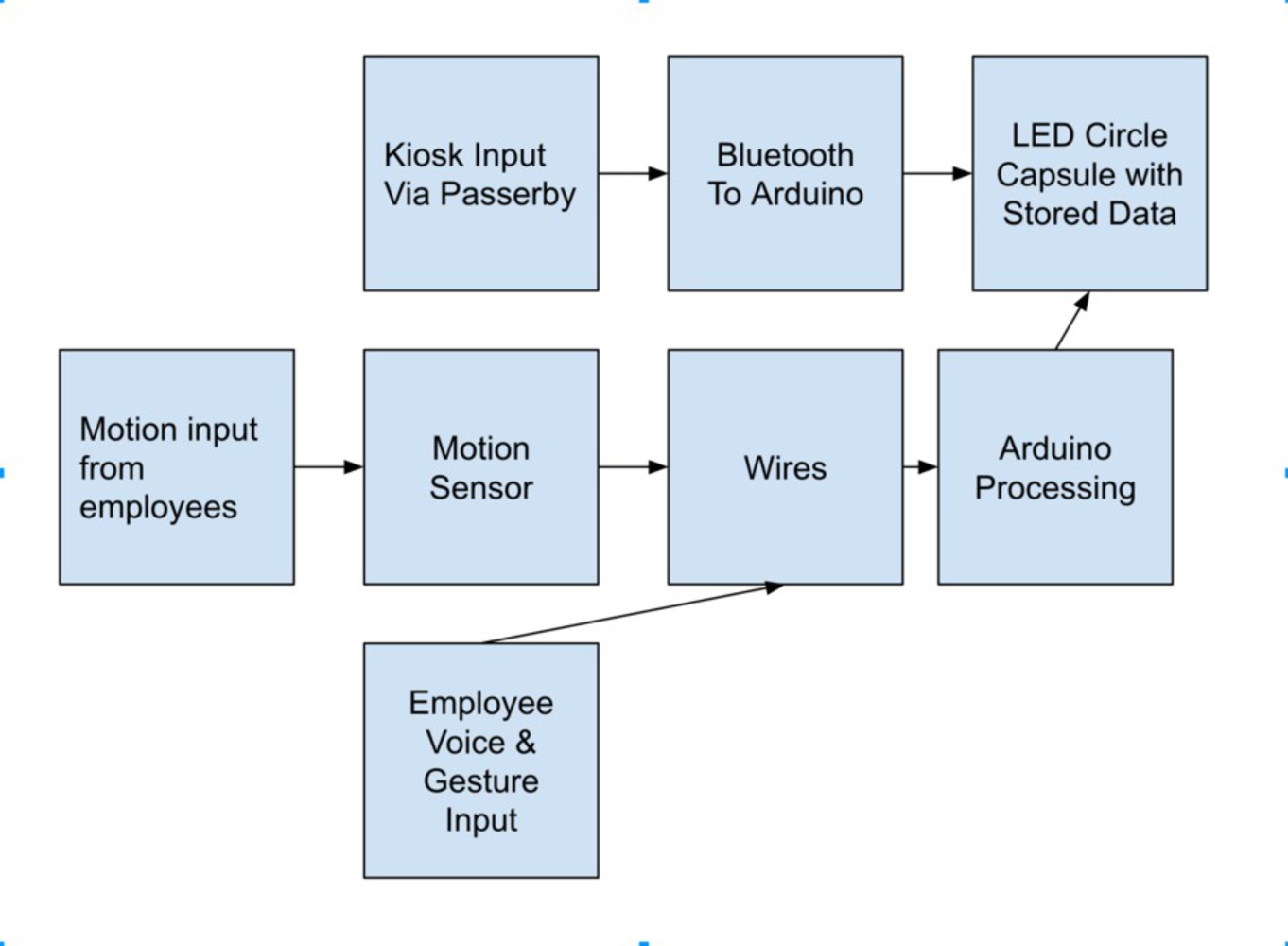User Experience
East Liberty residents who pass by the Google Bridge are encouraged to leave a memory at a kiosk underneath the bridge. They are also asked to categorize the memory as angry, happy, scary, and sad. The kiosk collects these memories as text and stores them in a “capsule” above. The capsules are small hollow circles made of LED strips that can display various shades of four colors: red, yellow, green, and blue. The color and its specific shade is determined by the type of memory being shared. Angry memories are red, happy memories are yellow, green memories are scary, and sad memories are blue. This is done to reflect Google’s color palette.
When Google employees walk through the bridge, random LED circles (memory capsules) will light up across the wall. The color coding of the memories helps Google employees choose to view the type of memories that they want to view. Google employees merely need to point to the wall and ask Google to bring up the capsule to learn more about the memory (Think “OK Google” from Google Home). Employees will also have the ability to comment on the memory, beginning a thread that others might continue. This helps them engage with the East Liberty community and learn about its rich history from local residents, some of which are at the brink of being pushed out due to gentrification. Building this understanding between Google employees and East Liberty residents might even help foster a more amicable and understanding relationship.
Below, memory capsules will also light up as East Liberty residents approach the bridge. They can also view these memories via a kiosk below and add to them in much the same way that Google employees can add to them.
As time goes on, there will be more memories than capsules able to hold them so memories will cycle randomly. It would be really interesting to see what a Google employee thinks of a memory from maybe 20 years earlier. An additional consideration is allowing employees to save memories or follow memories so they can be updated when someone else adds to that thread. In essence, this installation should only get better with age.


